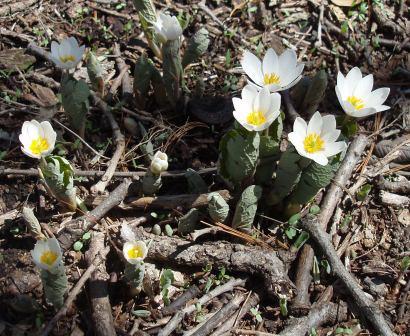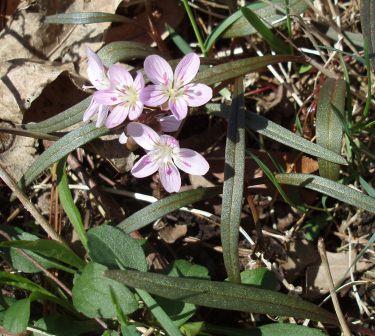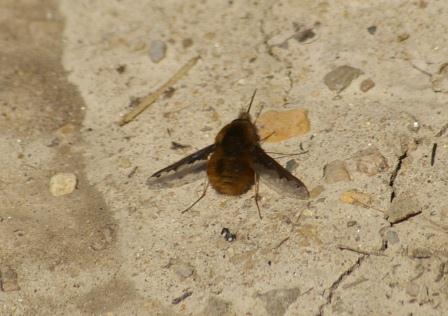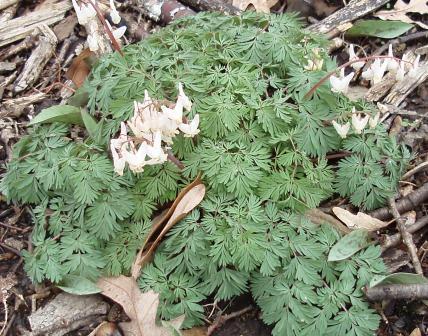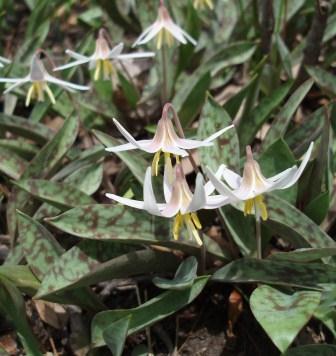by Carl Strang
This time I share my dossier for a common and beloved species. As usual, it begins with the general account I wrote when I established the file in the 1980’s, then additional entries begin with my date codes.

Cardinal, Northern
The cardinal is the first bird I studied with any intensity, as a child mapping song perches of males in my neighborhood and connecting them into “territories.” Generally they selected highly exposed perches in treetops and on television antennas. The song is highly variable, but tonal qualities of voice and type of song pattern are distinctive. The alarm note is a sharp “teek,” again of a distinctive tonal quality and pitch. The female also sings, the songs following the same pattern as the male’s but sometimes lower in volume.
They nest usually in thick bushes within 10 feet of the ground. A nest at Boiling Springs, PA, was in a rain gutter closely overarched by spruce branches. Young birds in a brood observed in Lombard, IL, were kept together and off the ground by the parents.
Both sexes have bright red beaks surrounded by black feathers. When viewed head-on this has an imposing effect, the bird’s weapon thus being highlighted. No doubt this is of significance in agonistic display. Field guides, with their emphasis on lateral views, lead us away from this kind of discovery.
Cardinals feed in bushes, in trees, and on the ground. They are not acrobatic foragers. They consume large seeds at feeders in winter. Cardinals appear to show some territoriality through winter.
Songs vary among locations, individuals, and times. Each male has more than one song. Some rendered songs are: “chibone, chibone, chibone, chibone;” “What-cheer, wheet wheet wheet wheet;” they beging singing in late January (as early as 23JA83 in DuPage); “pul’see pul’see …” (~7 reps).
17JL84. Male foraging in black cherry tree spent 5-8 sec. on a perch, moving head to look at nearby leaves and twigs in small turning movements, moving 0.5-1m between perches (Willowbrook Back 40).
NO84 they were often feeding on ground, scratching in leaves.
12FE87. Heard first song of year.
5MY87. Nest with 3 eggs, of twigs (slightly loose structure) beside trail in riparian strip at Willowbrook. In honeysuckle, 5 feet up, in fork of branches. Deep cup. Eggs bluish with brown mottling. By a few days later only one egg left, nest apparently abandoned (too close to trail?).
5JE88. In the middle of Geneva I stood under a tree in which a pair of Cardinals suddenly began to alarm-call rapidly. They were close to me, but not paying attention to me. The calls were directed at a blue jay which the cardinals chased from the isolated streetside tree to a clump of trees and brush, and continued the alarm calling and chasing until the jay left. The jay resisted some, was not driven off easily.

19JA89. First Cardinal song, on Willowbrook early morn. In an unusually warm January.
9MR89. Cardinals all singing today through midday (first warm day, 40 degrees F, after a long cold spell). There seem to be too many Cardinals singing, and I see 3 males chasing each other. In this year with such a mild January and no super-severe weather, unusually high survival?
17AP89. A cool, cloudy day. Cardinals all over the Back 40 are giving constant series of “alarm” (?) notes.
29JA90. First cardinal song of year, Willowbrook.
1990. The year of the 17-year cicadas, I caught some at Fullersburg and released them at Willowbrook. One of these flew across a small forest clearing, and a cardinal flew out and caught it with its beak, in mid-air.
26JA99. First cardinal song of year, Willowbrook.
4MR99. Many cardinals singing at Willowbrook, including a female near the Nature Trail head.
3MY99. Cardinals fighting in area of white cedars at Willowbrook.
13MY99. Cardinal nest at Willowbrook in honeysuckle shrub overhanging creek. May still be under construction, though birds agitated when someone is nearby. Female incubating 17MY, 27MY.
10AU99. Cardinal songs distinctly reduced in number, length. Only a few weak, partial songs this morning.
25AU99. Last cardinal song of year noted at Willowbrook.
26AU99. Cardinal fledgling, with rapid notes, similar in pitch to adult’s note but not as sharp, and rapidly repeated rather than separate.
1NO99. Cardinal eating buckthorn berries.

14JA00. Cardinal sang a half song in afternoon, Willowbrook.
2FE00. First full cardinal song of year, Willowbrook.
21FE00. McKee Marsh, north Blackwell Forest Preserve. A male cardinal singing from a very exposed perch at the top of a 25-foot-tall cottonwood. Doesn’t change posture much when singing. Thrusts face forward a little, but keeps bill level. Sang back and forth with other audible cardinals, answering with full songs, “What-cheer, wheet wheet wheet wheet.” The others stopped singing, it paused for some seconds, then gave a “what-cheer,” paused, did so again, and gradually added “wheet” syllables until it was singing full songs again, even in the others’ absence. When not singing, turned head to look all around.
25FE00. Willowbrook. Several juncos and cardinals singing this morning. A display by a male cardinal that was singing at the service road junction with the Nature Trail. A female was in the same tree, and for a minute or two the male faced her, occasionally adopted an extended, stretched out body posture unlike the normal singing pose, moved with body held rigidly, and emitted a chattering dry trill between some of the songs, all the while facing the female. She stayed in place, he never approached within less than 5 feet, and he then turned away from her and resumed singing normally.
1JL00. A female yellow warbler feeding a cowbird fledgling near the south end of Silver Lake, Blackwell. Earlier this week a pair of scarlet tanagers were feeding a cowbird at Willowbrook, and half a dozen times this spring I have seen male cardinals feeding them (some were the same pair, but at least 3 different broods involved) also at Willowbrook.
2SE05. Had to re-learn fledgling call of rapid high notes lacking sharpness of adult alarm. May have been contact call rather than alarm, though adult nearby gave very occasional alarm, too.
7JA08. Fullersburg. A cardinal sang, briefly and uncertainly, but definitely. My earliest noted song (previous earliest 14JA00). Temperatures in the 50’sF past couple days.
15JA10. Culver. First cardinal song of the year.
5OC10. Mayslake. Singing: white-crowned sparrow, phoebe, cardinal, song sparrow.
7DE10. Mayslake. A cardinal singing, full strong song repeated a couple times. Sunny day but cold, teens F. (I have heard cardinals singing on occasion all through the middle of this winter, the first time I have observed such an extended singing period).
Another observation in recent years is that cardinals in our area seem to raise mainly cowbirds early in the season, but a final August nest nearly always produces only cardinals. If this is correct, it implies a strong selective pressure, at least locally, for shifting the nesting season later.

















